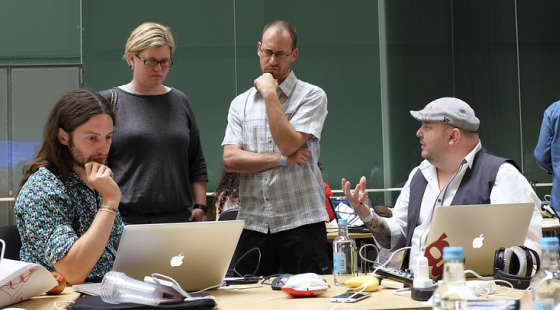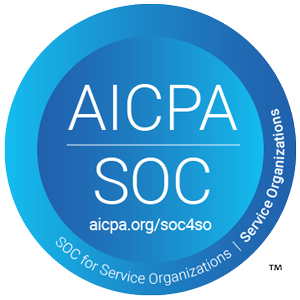
Managing a Hackathon Event
Managing a Hackathon Event

Ensure your hackathon runs smoothly
A hackathon event has a lot of moving parts, but with the right hackathon tools, proper planning and execution, you can run a hackathon that meets your goals and creates a positive experience for all participants. Here are some tips from the Brightidea Professional Services Team for successfully managing an onsite, hybrid, or virtual hackathon.
Tips for managing an onsite hackathon
Give yourself plenty of setup time
If the hackathon is in-person, it’s a good idea to visit the venue the night before (or as early as the venue is available) to set up tables, chairs, and signage. Before the day of the event make sure the venue layout is set, food is ordered, and the audio/video/camera equipment has been delivered and set up.
Send an email to participants and staff the day before the event with the schedule, venue location, parking directions, and any other logistical information that can help ensure the event kickoff goes smoothly.

Make the space easy to navigate
It needs to be easy for participants to find different areas of the venue, such as restrooms, common areas, or private workspaces for each team.
You may also want to post signs that have the event schedule on them. The schedule should include meal time, when the kickoff and prize ceremonies are, when teams will share their demos, and when the judging begins.
It’s also a good idea to prepare name tags for anyone who will be working at the event. This will make it easier for participants to know whom they can ask for assistance. If you want to go the extra mile, you could even order branded T-shirts for the event volunteers to help them stand out amongst the participants.
Foster a positive atmosphere
Encourage a positive and inclusive atmosphere where participants can feel comfortable sharing their ideas and collaborating with each other. This type of atmosphere is fostered and demonstrated by the hackathon team, including the judges, mentors, and volunteers onsite.
You may also want to define a code of conduct and include it on the hackathon website to set expectations. You might even include the code of conduct on whatever agreements you require the participants to sign. You can make the event more fun and meaningful if you help create networking opportunities, such as icebreakers, for participants to interact with each other throughout the event.
Tips for managing a hybrid hackathon
Creating a positive experience for virtual participants
Hybrid hackathon events allow participation both virtually and in-person. While this enables a more diverse group of participants, hybrid hackathons can be the most challenging type of event to manage because people participating virtually can feel left out, and it often takes more effort to make it a level playing field for everyone. The experience for virtual participants doesn’t have to be identical, but it should be equitable, to those participating in person. Here are a few tips for creating an equitable experience:
- Test the sound, mic placement, and camera locations to ensure it’s engaging for virtual participants
- If you’re ordering food for onsite participants and carving out time for breaks and mingling, do the same for the virtual participants and give them a budget for food delivery
- Have a leader who’s also virtual host a session on your preferred video conferencing platform
- Introduce the virtual participants first or give them the first opportunity to present or ask questions

Tips for managing a virtual hackathon
Providing the digital infrastructure
Virtual hackathons require a number of hackathon tools and workplace applications to communicate, collaborate, delegate, and present the work to each other and the panel of judges. Brightidea Hackathon integrates with many of the following apps and platforms to take your hackathon to the next level.
Here’s a list of hackathon tools you’ll need for a virtual hackathon and reliable options for each:
- Video chatting: Zoom, Webex, Teams, GoToMeeting
- Text based chatting: Slack, Teams
- Digital whiteboard: Brightidea Whiteboard
- Wireframing: Basalmiq, Axure, Moqups
- Project management: Jira, Asana, Monday, Airtable, ServiceNow
- Presentation: Google Slides, Prezi, Keynote, ClearSlide, RevealJS
- File sharing: Dropbox, Google Drive, Box
- Centralized resource hub: Brightidea Hackathon

Things to keep in mind for all types of hackathons
Maintain effective communication
Ongoing communication is key to a successful hackathon. Things often don’t go perfectly according to plan, which is why you should be prepared to quickly communicate event updates. Brightidea Hackathon offers automated status updates via email to keep participants aware of the schedule, and any last minute changes. You can also post these updates on screens or signage at the event.
Help your participants stay on task
Brightidea Hackathon can integrate with your preferred hackathon tools, like Jira, Asana, Monday, Airtable, or ServiceNow, in order to help teams understand duties and stay on task. These hackathon tools are useful both during the hackathon when building the prototype or proof-of-concept, as well as after the hackathon for any idea that gets funded.
Share the event on social media
Share key moments of the event on social media to give participants more visibility and recognition. Despite the fact that virtual hackathons don’t have the photo worthy moments of an in-person hackathon, there are still opportunities to create buzzworthy content. Content ideas could include: coverage of kickoff speakers, the prize ceremony, and interviews with participants, winners, sponsors, and judges.
Revisit agreed upon evaluation criteria
The same criteria previously communicated will be used to fill out the hackathon judging scorecard. By keeping this criteria in mind, participants can quickly and clearly understand why certain ideas are selected and others are not. This level of transparency promotes trust and engagement.
Recognize and reward success
Recognize and reward participants who excelled in the hackathon. Provide meaningful prizes or rewards that are relevant to the theme of the event and valued by the participants. Consider offering all participants something small to show gratitude for their contribution.
If the prizes aren’t available on the day of the hackathon, provide the teams with clear instructions on how to collect them later. Don’t forget to capture the moment with team pictures at the award hand-off.
Conduct a post-event retrospective
We recommend conducting an event retrospective to reflect on and discuss the overall hackathon experience. Gather feedback from participants, volunteers, and other stakeholders to identify areas for improvement and measure the success of the event. This is the time to address learnings, lessons, and strengths to ensure you can improve for the next hackathon.

